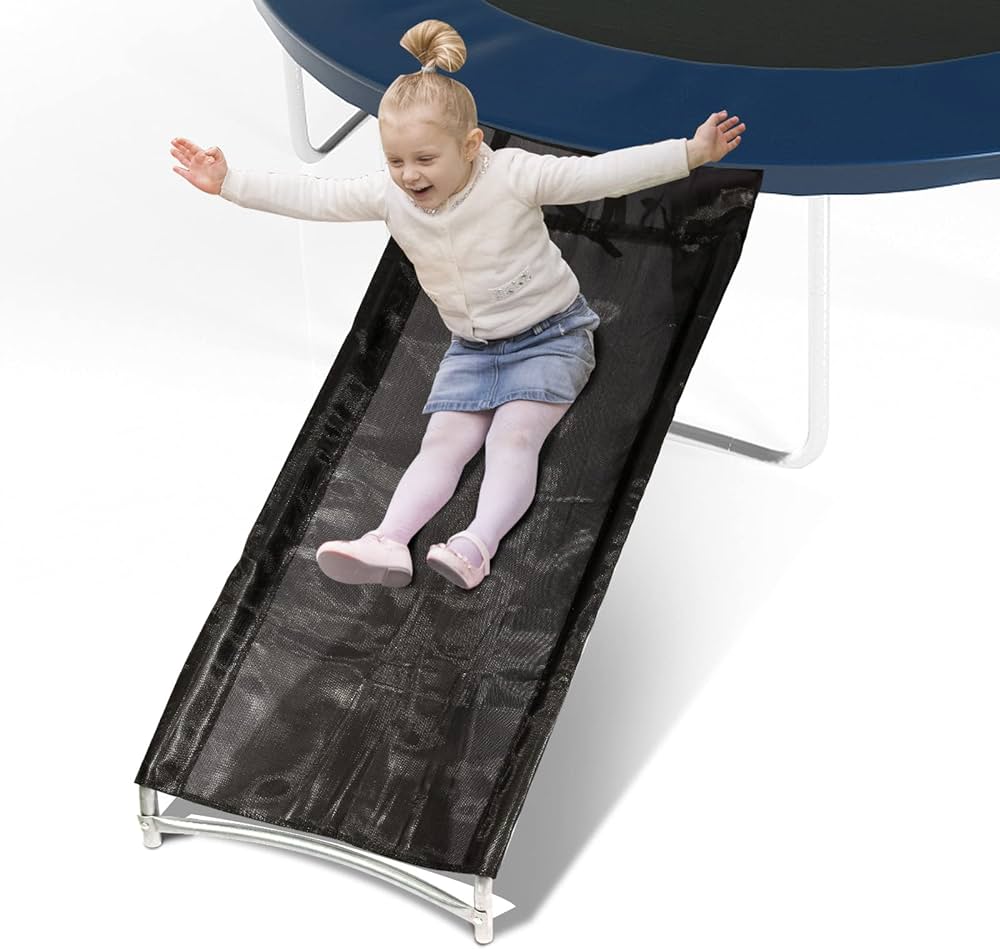A scaffolding system is safer than a ladder for elevated work due to its stability and platform space. When working at heights, safety is paramount, and using a scaffold provides a more secure and spacious working environment compared to a ladder.
Scaffolds offer stable platforms, guardrails, and the ability to reach higher areas with ease, reducing the risk of falls or accidents. Additionally, scaffolds can be adjusted to various heights and provide a larger surface for tools and materials, increasing efficiency and safety on the job site.
Choosing a scaffold over a ladder is a smart decision for any task that requires working at heights while prioritizing safety and productivity.

Credit: www.amazon.com
The Risks Of Using Ladders
Using a ladder can be a common practice when it comes to reaching high places and completing home improvement tasks. However, it’s important to be aware of the risks involved. The improper use of ladders can lead to serious injuries and accidents. In this section, we will discuss the various risks associated with using ladders, including injuries from falls and toppling and slipping hazards.
Injuries From Falls
One of the most significant hazards when working with ladders is the risk of falling. Falls can occur due to a variety of factors, such as unstable ground, incorrect ladder setup, or loss of balance. These falls can result in severe injuries, including broken bones, head trauma, and even paralysis.
To prevent falls, it’s crucial to ensure that the ladder is securely positioned on a stable and level surface. Additionally, always maintain three points of contact with the ladder, such as two hands and one foot or two feet and one hand. This will help provide stability and reduce the risk of slipping or losing balance.
Toppling And Slipping Hazards
In addition to falls, another risk associated with ladders is toppling and slipping. Ladders can easily topple over if they are not properly secured or if the weight placed on them exceeds their capacity. Furthermore, ladder rungs or steps can become slippery due to wet or greasy surfaces, increasing the chances of accidents.
To mitigate these risks, it is essential to ensure that the ladder is placed on a solid and level surface. Avoid positioning the ladder on uneven ground or slippery surfaces. Regularly inspect the ladder for any signs of damage or worn-out components that could compromise its stability.
Here are some tips to keep in mind:
- Clear the work area of any debris or obstacles that may cause you to trip while using the ladder.
- Wear slip-resistant shoes to enhance traction and reduce the risk of slipping.
- Consider using ladder accessories, such as stabilizer bars or leg levelers, to ensure proper stability.
- Always follow the ladder manufacturer’s weight capacity guidelines and avoid overloading the ladder.
By being cautious and taking necessary precautions, you can reduce the chances of accidents and injuries when using ladders. However, it’s essential to remember that there are safer alternatives available that can eliminate these risks altogether.
Now that we’ve discussed the risks associated with ladders, let’s explore some safer alternatives that are worth considering. These alternatives provide a secure and stable platform for working at heights, while minimizing the risks of falls and accidents. From scaffolding to aerial lifts, there are several options available, depending on the nature of the task and the height involved. In the next section, we will discuss these alternatives in detail.
The Advantages Of Alternatives
Alternative equipment offers increased stability, reducing the risk of accidents that may occur with traditional ladders. The enhanced stability provides users with a secure platform to work efficiently.
Alternative options allow easy accessibility to hard-to-reach areas, eliminating the need for precarious maneuvers. These alternatives are designed to provide safer solutions for working at heights.
Popular Alternatives To Ladders
Discover safer alternatives to ladders with these popular options:
Scaffolding Systems
Become familiar with the industry favorite for height access.
Aerial Work Platforms
Explore the efficient solutions for working at various heights.

Credit: www.reddit.com
Innovative Solutions For Working At Heights
When it comes to working at heights, safety should always be a top priority. Traditional methods, such as using ladders, can present risks and limitations. However, with advancements in technology, there are now innovative solutions available that are safer alternatives to ladders. In this blog post, we will explore two such solutions: Robotics and Drones, and Exoskeleton Technology.
Robotics And Drones
Robots and drones have revolutionized the way we work, and they have also made a significant impact in the field of working at heights. These technological marvels are designed to perform tasks at elevated levels, reducing the need for manual labor and minimizing the associated risks. Here are some key advantages of using robotics and drones:
- Improved safety: Robots and drones can go places that are hazardous for humans, thereby minimizing the risk of falls and accidents.
- Efficiency: These machines can perform tasks much faster than humans, increasing productivity on the job.
- Precision and accuracy: With advanced sensors and cameras, robots and drones can navigate narrow spaces and tight corners with precision, ensuring the job is done accurately.
- Remote operation: One of the standout advantages is the ability to operate them remotely, reducing the need for workers to physically climb at heights and exposing themselves to danger.
Exoskeleton Technology
Exoskeleton technology is another breakthrough innovation that addresses safety concerns when working at heights. These wearable devices provide support to the worker’s body, enhancing physical capabilities and reducing the risk of falls. Here is why exoskeleton technology is a game-changer:
- Stability and balance: Exoskeletons provide stability and balance to the wearer, reducing the chances of accidents.
- Reduced strain: With the help of exoskeletons, workers can carry heavy equipment or tools with less strain on their bodies, minimizing the risk of muscle fatigue and injuries.
- Ergonomic design: These devices are ergonomically designed to provide comfort and support to the wearer during prolonged periods of work, increasing overall efficiency and reducing fatigue.
- Flexibility: Exoskeletons are versatile and can be customized to meet the specific needs of different job requirements, ensuring maximum safety and performance.
Regulations And Safety Standards
When it comes to working at heights, regulations and safety standards play a crucial role in ensuring the well-being of workers. It is important to adhere to safety guidelines and standards to prevent accidents and injuries. Let’s delve into the specifics of occupational safety and health administration (OSHA) guidelines and European Union directives on work at heights to understand the recognized safety measures in these regulations.
Occupational Safety And Health Administration (osha) Guidelines
OSHA, the federal agency of the United States Department of Labor, is committed to ensuring safe and healthful working conditions. When working at heights, OSHA has established specific guidelines to reduce the risk of falls and other potential hazards. Some of the key aspects covered by OSHA guidelines include:
- Proper training and education for workers involved in work at heights
- Implementation of fall protection systems
- Regular equipment inspections and maintenance
- Requirement for employers to provide a safe work environment
European Union Directives On Work At Heights
The European Union (EU) also places strong emphasis on the safety of workers performing tasks at elevated locations. The EU directives outline comprehensive measures to ensure that work at heights is carried out with the utmost caution and adherence to safety protocols. These directives encompass:
- Requirement for risk assessments before commencing work at heights
- Mandatory use of appropriate personal protective equipment (PPE)
- Emphasis on collective protection measures over individual fall protection devices
- Provisions for training and competence evaluation for workers engaged in work at heights

Credit: www.linkedin.com
Training And Education For Safer Practices
Training and education are crucial for promoting safer practices in any industry. Proper training on equipment usage and raising safety awareness through programs are essential components for ensuring a safer work environment. By implementing these measures, workers can minimize risks and improve overall safety standards in the workplace.
Proper Equipment Usage Training
Knowledge and proficiency in handling equipment are key to ensuring safety in any work setting. Providing comprehensive training on the proper usage of equipment helps employees understand the potential risks and how to mitigate them. It also ensures that personnel are competent in carrying out their tasks safely and efficiently, reducing the likelihood of accidents and injuries.
Safety Awareness Programs
Safety awareness programs play a vital role in fostering a culture of safety within the workforce. These initiatives aim to educate employees about potential hazards, safety protocols, and best practices. By enhancing the understanding of safety measures and encouraging proactive risk management, organizations can significantly reduce incidents and create a safer environment for all workers.
Frequently Asked Questions Of What Is Safer Than A Ladder
What Are Safer Alternatives To Using A Ladder?
When it comes to safety, consider using scaffolding, work platforms, or aerial lifts instead of a ladder. These alternatives offer more stability and security, reducing the risk of falls and accidents. Always prioritize safety when working at heights.
Conclusion
To conclude, it is evident that there are safer alternatives to ladders for various tasks. By considering options such as scaffolding, aerial lifts, or even utilizing technology like drones, individuals can mitigate the risks associated with working at heights. Prioritizing safety should always be a top concern, and exploring alternative methods can help ensure the well-being of workers.
So, before reaching for a ladder, it’s worth exploring safer options available.
{ “@context”: “https://schema.org”, “@type”: “FAQPage”, “mainEntity”: [ { “@type”: “Question”, “name”: “What are safer alternatives to using a ladder?”, “acceptedAnswer”: { “@type”: “Answer”, “text”: “When it comes to safety, consider using scaffolding, work platforms, or aerial lifts instead of a ladder. These alternatives offer more stability and security, reducing the risk of falls and accidents. Always prioritize safety when working at heights.” } } ] }

